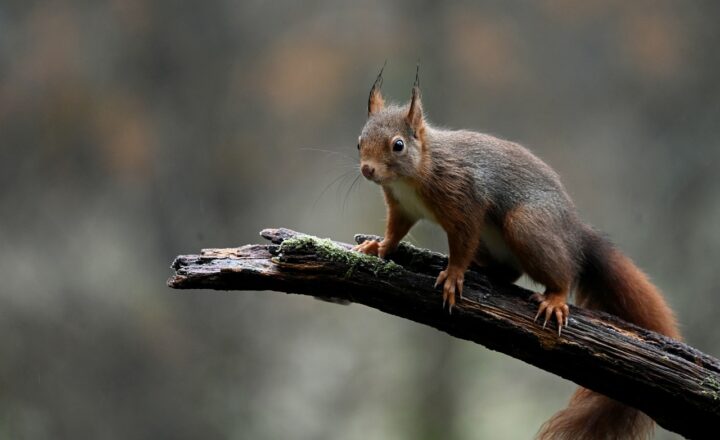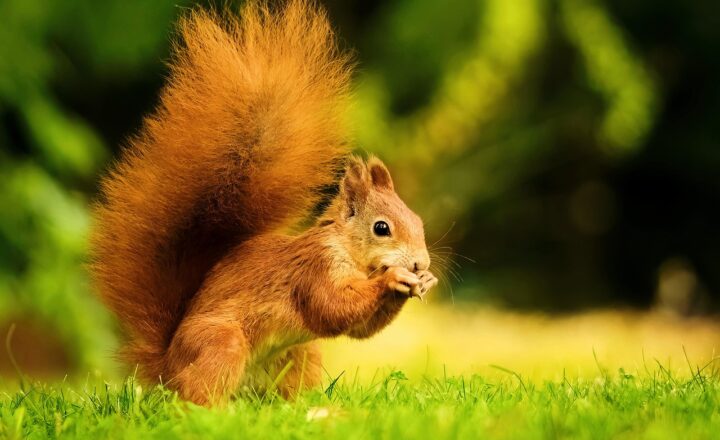The Secret Life of Squirrels: How These Clever Animals Thrive in Urban Areas
November 13, 2024

Squirrels are often seen as common urban wildlife, darting across parks, climbing trees, and sometimes raiding bird feeders. However, beneath their seemingly simple existence lies a complex and adaptive life that allows them to thrive in urban environments. In this article, we delve into the secret lives of these clever creatures and explore the various behaviors, adaptations, and interactions that enable them to succeed in cities.
1. Understanding Urban Squirrels
Squirrels belong to the Sciuridae family, which includes tree squirrels, ground squirrels, chipmunks, and flying squirrels. The most common urban species are Eastern Gray Squirrels and Fox Squirrels, which have adapted remarkably well to human environments.
Squirrels are omnivores with a varied diet that consists of nuts, seeds, fruits, fungi, and even insects. Their ability to forage and store food allows them to make the most of seasonal differences in food availability – an essential survival strategy in urban settings where food sources may fluctuate.
2. Adaptation to Urban Environments
Urban areas present both challenges and opportunities for squirrels. Adaptations that help them thrive include:
- Nesting Strategies: Squirrels utilize the trees, buildings, and park structures to create nests called dreys, which are crucial for their reproductive success and protection from predators.
- Enhanced Foraging Techniques: In cities, squirrels have become adept at finding food in dumpsters, parks, and residential gardens. They learn to navigate human environments effectively, often overcoming obstacles that would deter other animals.
- Increased Socialization: Urban squirrels often form loose social groups, especially in areas with abundant food sources. This social behavior can lead to enhanced foraging success and better protection against predators.
While their natural instincts guide them, urban squirrels display remarkable intelligence as they adapt their behaviors to suit the metropolitan landscape.
3. The Role of Squirrels in Urban Ecosystems
Squirrels play an essential role in urban ecosystems by:
- Seed Dispersal: As squirrels bury nuts and seeds to store for later, they inadvertently help in planting trees and plants, contributing to urban greenery.
- Providing Food for Predators: Squirrels are a key prey species for urban predators like hawks, foxes, and coyotes, helping maintain the balance in urban food webs.
- Promoting Biodiversity: Their presence and activities support various other wildlife, including birds and insects, fostering a more diverse urban ecology.
Understanding their ecological importance encourages a more appreciative view of these often-overlooked animals.
4. Challenges Faced by Urban Squirrels
Despite their adaptability, urban squirrels also face numerous challenges, including:
- Road Traffic: Many squirrels fall victim to traffic while crossing busy streets, which poses a significant threat to their populations in heavily urbanized areas.
- Predation: Urban predators, while reliant on squirrels for food, can also threaten their survival, especially in areas where humans are less likely to tolerate wildlife presence.
- Human Interference: The rise in urban development and human activity can disrupt nesting areas and reduce food supplies, making survival more challenging for squirrels.
While adaptable, the resilience of urban squirrels can only go so far in the face of these threats.
5. Interactions with Humans
Urban squirrels often have an ambiguous relationship with humans. Many people appreciate their antics and find joy in observing them, while others view them as pests. Some key interactions include:
- Bird Feeders and Gardens: Squirrels are notorious for raiding bird feeders and gardens, which can lead to conflict with gardeners and bird enthusiasts. However, some people find amusement in their cleverness.
- Urban Conservation: Many urban areas are recognizing the ecological role of squirrels and are implementing conservation measures to protect them and their habitats.
- Education and Wildlife Awareness: Squirrels serve as an excellent educational tool for teaching city dwellers about wildlife and the importance of biodiversity in urban ecosystems.
Understanding these interactions helps in appreciating the role of squirrels within urban landscapes and can foster a more supportive approach towards coexistence.
6. Conclusion: Embracing Our Urban Wildlife
Squirrels, often viewed as simple creatures, are a testament to nature’s resilience and adaptability. Their ability to thrive in urban environments speaks to their intelligence and resourcefulness. By learning more about their habits, challenges, and interactions with humans, we can foster a deeper appreciation for these clever animals.
In a rapidly urbanizing world, it’s essential to embrace and protect the flora and fauna that make our cities more vibrant. Squirrels, with their lively antics and pivotal ecological roles, remind us of the intricate web of life interwoven with our day-to-day existence. By enhancing public awareness and fostering coexistence, we can ensure that these spirited creatures not only survive but thrive in our urban landscapes for generations to come.








